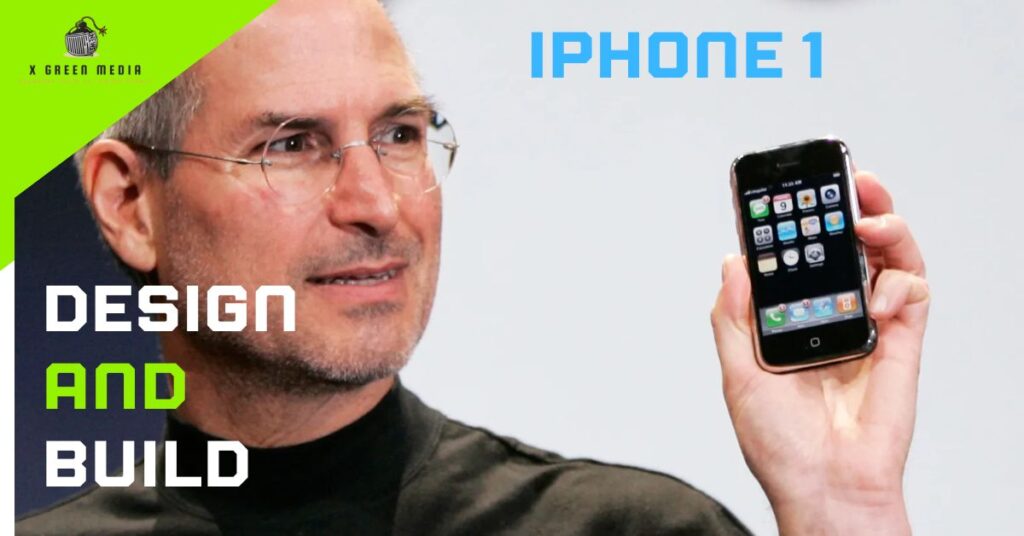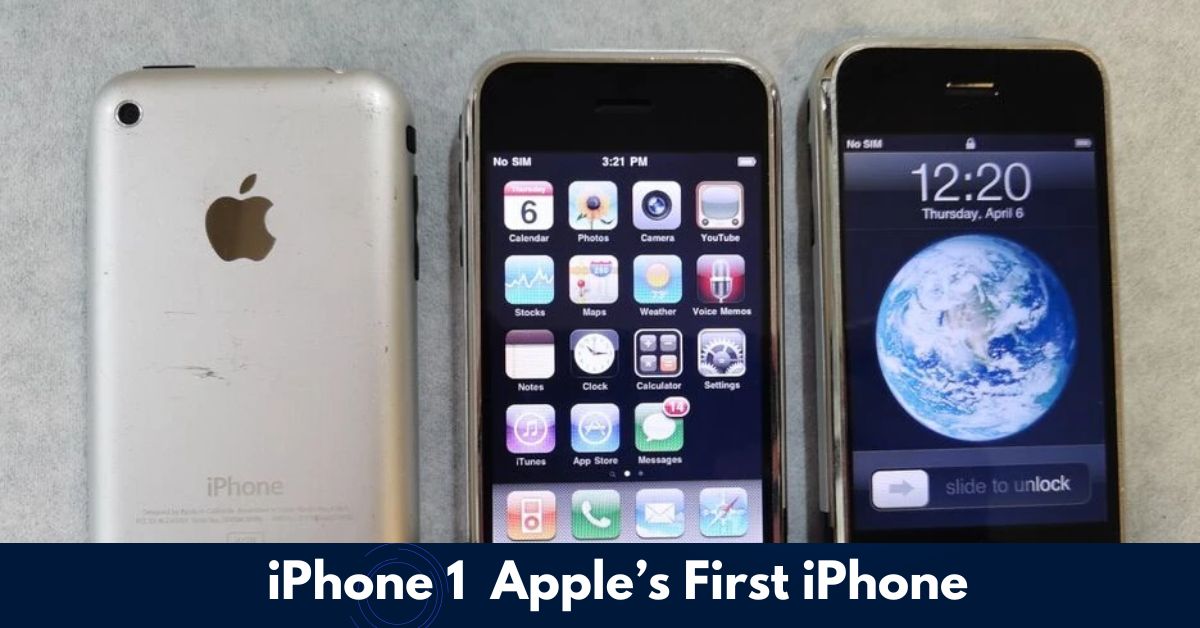The launch of the original iPhone 1 in 2007 marked a defining moment in technology, forever transforming the way we communicate, consume media, and interact with the digital world. This comprehensive guide explores the iPhone 1’s features, specifications, release story, and its enduring legacy in the smartphone industry.
The Birth of the iPhone 1: A Revolution Begins
On January 9, 2007, Steve Jobs took the stage at Macworld in San Francisco and introduced the world to the first-generation iPhone. Apple’s vision was clear: to combine a mobile phone, a widescreen iPod with touch controls, and a breakthrough Internet communications device into one small, handheld product. The iPhone was officially released in the United States on June 29, 2007.
The excitement was palpable. Long lines formed outside Apple and AT&T stores, and the iPhone sold over 6 million units before being discontinued in July 2008. Its sleek design, intuitive interface, and innovative features set the standard for modern smartphones.
Design and Build: Minimalism Meets Functionality

The iPhone 1 was a marvel of industrial design, featuring a seamless blend of glass and aluminum. At just 11.6 mm thick and weighing 135 grams, it felt remarkably slim and premium in the hand.
Key Design Features:
- Dimensions: 115 x 61 x 11.6 mm
- Weight: 135 g
- Materials: Aluminum back, plastic bottom, glass front
- Color: Black
The device featured a single physical Home button, a 3.5-inch capacitive touchscreen, and minimal external controls, emphasizing simplicity and ease of use.
Display and Touch Interface: A New Way to Interact
The original iPhone’s 3.5-inch TFT display was considered large for its time and boasted a resolution of 320 x 480 pixels (~165 ppi). More importantly, it introduced the world to multi-touch technology, allowing users to pinch, swipe, and tap with their fingers—no stylus required.
Display Table
| Feature | Specification |
|---|---|
| Size | 3.5 inches |
| Resolution | 320 x 480 pixels (3:2 ratio) |
| Pixel Density | ~165 ppi |
| Type | TFT LCD |
| Protection | Corning Gorilla Glass |
| Touchscreen | Capacitive Multi-touch |
This intuitive interface made navigation effortless and set the stage for the touch-driven devices that followed.
Hardware and Performance Of iPhone 1
Under the hood, the iPhone 1 was powered by a 412 MHz ARM 11 processor, paired with 128 MB of RAM and storage options of 4 GB, 8 GB, or 16 GB. While modest by today’s standards, these specs were competitive in 2007 and enabled smooth operation of iOS and its built-in applications.
Hardware Table
| Component | Specification |
|---|---|
| Processor | 412 MHz ARM 11 |
| RAM | 128 MB |
| Storage | 4 GB / 8 GB / 16 GB (non-expandable) |
| GPU | PowerVR MBX |
| Battery | Li-Ion 1400 mAh (non-removable) |
| SIM | Mini-SIM (2G GSM) |
The device supported quad-band GSM, EDGE data, Wi-Fi 802.11b/g, and Bluetooth 2.0 (for headset support). However, it lacked 3G connectivity, GPS, and video recording—features that would appear in later models.
Camera and Multimedia
The iPhone 1 came equipped with a 2-megapixel rear camera, which, while basic, was notable for its integration with the phone’s photo management and sharing features. There was no front-facing camera or video recording capability.
Camera Table
| Feature | Specification |
|---|---|
| Rear Camera | 2 MP |
| Front Camera | None |
| Video | Not supported |
| Flash | None |
Despite its limitations, the camera was praised for its ease of use and image quality relative to other phones at the time.
Operating System and Software
The original iPhone launched with iPhone OS 1 (later renamed iOS), introducing a new paradigm for mobile operating systems. Key software features included:
- Safari web browser for full HTML browsing
- Mail client supporting rich HTML email
- iPod functionality for music and video playback
- Google Maps and YouTube apps
- Visual Voicemail (a first in the industry)
- Widgets for weather, stocks, and more
Notably, the first iPhone did not support third-party apps at launch. The App Store would arrive a year later, opening the door to the vast app ecosystem we know today.
Connectivity and Sensors
Connectivity options on the iPhone 1 included Wi-Fi, Bluetooth 2.0, and USB 2.0 for syncing and charging. The device also featured an accelerometer for automatic screen rotation and a proximity sensor to turn off the display during calls.
Connectivity Highlights:
- Network: Quad-band GSM (850/900/1800/1900 MHz)
- Data: EDGE (no 3G)
- Wi-Fi: 802.11b/g
- Bluetooth: 2.0 (headset support only)
- USB: 2.0
Battery Life
Apple claimed the iPhone 1 could deliver:
- Up to 8 hours of talk time
- Up to 24 hours of audio playback
- Up to 7 hours of video playback
- Up to 6 hours of web browsing
- Up to 250 hours of standby time
These figures were impressive for the era and contributed to the device’s appeal.
Pricing and Availability
At launch, the iPhone was available in two models:
- 4 GB: $499 (discontinued September 2007)
- 8 GB: $599
- 16 GB: Introduced in February 2008 at $499
The iPhone was initially exclusive to AT&T in the United States and later rolled out to Europe and other markets.
Comparison: iPhone 1 vs. Modern iPhones
To appreciate the progress, here’s a quick comparison of the original iPhone and a modern iPhone (e.g., iPhone 15):
| Feature | iPhone 1 (2007) | iPhone 15 (2023) |
|---|---|---|
| Display | 3.5″ TFT, 320×480 | 6.1″ OLED, 2556×1179 |
| Rear Camera | 2 MP | Dual 48 MP + 12 MP |
| Front Camera | None | 12 MP |
| Processor | 412 MHz ARM 11 | A16 Bionic |
| RAM | 128 MB | 6 GB |
| Storage | 4/8/16 GB | 128/256/512 GB, 1 TB |
| Battery | 1400 mAh | 3349 mAh (approx.) |
| OS | iOS 1 | iOS 17 |
| App Store | No | Yes |
| Biometric Auth | None | Face ID |
| 5G Support | No | Yes |
Lasting Impact and Legacy
The iPhone 1 was more than just a new gadget—it was a paradigm shift. Here’s why its legacy endures:
- Touchscreen Standard: The iPhone popularized capacitive multi-touch screens, making physical keyboards obsolete.
- Unified Device: It combined phone, iPod, and Internet into one device, streamlining everyday tech use.
- App Ecosystem: Though the App Store wasn’t available at launch, the iPhone’s architecture paved the way for the mobile app revolution.
- Design Language: Its minimalist design, with a focus on glass and metal, influenced not only smartphones but also tablets, laptops, and wearables.
- Mobile Internet: The iPhone made web browsing, email, and media consumption on the go a mainstream reality.
Conclusion
The original iPhone set the blueprint for the modern smartphone. Its innovative design, user-friendly interface, and integration of multiple technologies made it a cultural icon and a commercial success. Today, every smartphone owes something to the iPhone 1’s legacy.
Whether you’re a tech historian, a collector, or simply curious about where it all began, the story of the iPhone 1 is a testament to Apple’s vision and the power of disruptive innovation.
References:
- [Apple’s official 2007 press release]
- [Wikipedia: iPhone (1st generation)]
(All technical data and historical facts have been cross-verified from the latest available sources as of June 2025.)
You may also like : Shreyas Iyer, Can AI Really Replace Programmers, Raja Saab, Toyota Fortuner Legender, Swastik Chikara, Khan Sir’s Hidden Marriage
Follow Us On : Facebook, LinkedIn


